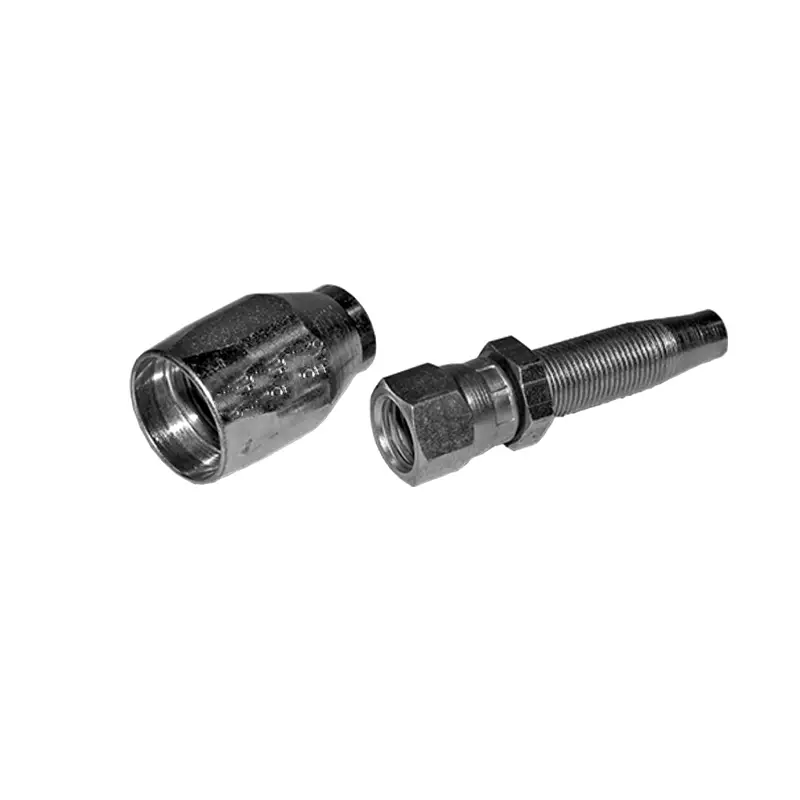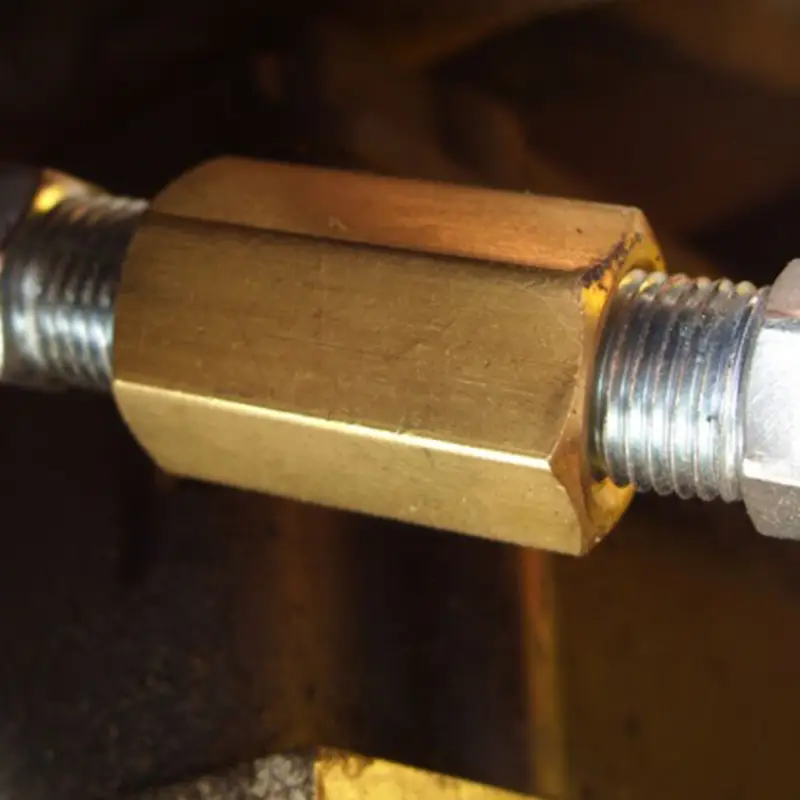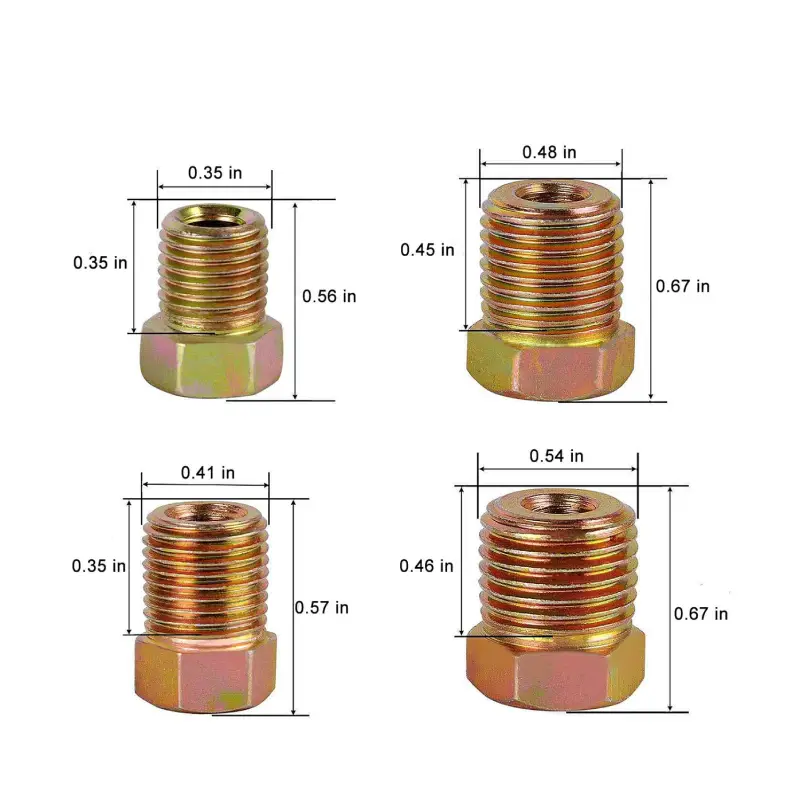Installing field attachable hydraulic fittings is a critical skill for maintaining hydraulic systems in various industries. These fittings enable on-site hose assembly and repairs, minimizing downtime and maximizing operational efficiency. Proper installation ensures reliable, leak-free connections, essential for high-pressure hydraulic systems.
This blog post provides a step-by-step guide to installing field attachable hydraulic fittings. We will cover essential preparation, assembly, and tightening techniques to ensure a secure and durable connection. Understanding these procedures is vital for technicians and operators who need to perform on-site hydraulic system maintenance.
What Are Field Attachable Hydraulic Fittings?



Field attachable hydraulic fittings are specialized components designed to enable the on-site assembly and repair of hydraulic hose assemblies. They provide a practical solution for quickly creating or fixing hydraulic connections without requiring specialized workshop equipment or extensive downtime. These fittings are crucial in industries where hydraulic systems are essential, such as construction, agriculture, and mining, where equipment breakdowns can significantly impact productivity.
These fittings typically consist of a socket and a nipple that are mechanically attached to the hydraulic hose using basic tools. They are engineered to withstand high pressures and harsh operating conditions, ensuring reliable and leak-free connections. Field attachable fittings are available in various sizes, thread types (like JIC, NPT, and BSP), and materials to accommodate diverse hydraulic system requirements. This versatility makes them an indispensable tool for maintaining and repairing hydraulic equipment in remote or demanding environments.
How to Install Field Attachable Hydraulic Fittings?
Installing field attachable hydraulic fittings demands precision and careful adherence to established procedures. These fittings are crucial for on-site repairs and assembly, minimizing downtime and ensuring hydraulic systems operate efficiently. Proper installation guarantees a reliable, leak-free connection, vital for maintaining system integrity.
Tools Needed for Field Attachable Hydraulic Fitting Installation
- Wrenches: Adjustable wrenches (or appropriately sized fixed wrenches)
- Hose Cutter: Specialized hydraulic hose cutter
- Crimping Tool (if applicable): Calibrated crimping tool for crimp-style fittings
- Lubricant/Grease: Compatible lubricant/grease
- Leak Detection Solution (optional): For testing after installation
Step 1. Prepare the Hydraulic Hose and Fittings
Begin with a thorough inspection of both the hydraulic hose and the field attachable fittings. Examine the hydraulic hose for any signs of damage, such as cuts, abrasions, or internal wear. Inspect the fittings for defects like damaged threads, corrosion, or cracks. Ensure the hydraulic hose is clean and free from debris, and verify that the fittings match the hydraulic hose’s size and type. Clean the inside and outside of the hydraulic hose end to prevent contamination. If necessary, cut the hydraulic hose end squarely using a specialized hydraulic hose cutter to ensure a proper, even fit.
Proper preparation is paramount for a successful installation. Ensure the hydraulic hose end is cut cleanly and that all components are free from contaminants that could compromise the connection. Using the correct tools and fittings is essential to prevent leaks and ensure a secure mechanical bond. Thorough inspection and cleaning are crucial to avoid future system failures and maintain optimal performance.
Verify that the fittings are compatible with the hydraulic fluid being used in the system, as certain fluids can degrade or damage incompatible materials. Ensure the hydraulic hose is not twisted or kinked during preparation, as this can affect the fitting’s seating and compromise the connection’s integrity. Double-check the hydraulic hose dimensions against the fitting specifications to ensure a precise fit, preventing leaks and ensuring a reliable connection.
Step 2. Insert the Hydraulic Hose Into the Socket
Carefully insert the hydraulic hose into the socket of the field attachable fitting. Ensure the hydraulic hose is fully inserted and seated correctly within the socket, reaching the specified depth. Some fittings may require the hydraulic hose to be pushed or twisted to ensure proper seating. Verify that the hydraulic hose is not twisted or kinked during insertion, as this can compromise the connection and lead to leaks. Use a lubricant, if recommended by the fitting manufacturer, to ease insertion and prevent damage.
Proper insertion is vital for a secure and leak-free connection. Ensure the hydraulic hose is fully seated within the socket to prevent leaks and ensure a strong mechanical bond. Avoid twisting or kinking the hydraulic hose during insertion, as this can damage the hydraulic hose or fitting, leading to premature failure. Confirm the hydraulic hose is properly aligned with the socket to ensure even distribution of pressure and prevent stress on the connection.
Ensure the hydraulic hose is inserted straight into the socket to avoid any angled or uneven seating, which can compromise the seal and lead to leaks. Verify the hydraulic hose is inserted to the correct depth as specified by the manufacturer, ensuring proper engagement with the fitting’s internal components. Double-check the hydraulic hose’s position within the socket before proceeding to the next step, ensuring a secure and reliable connection.
Step 3. Assemble the Nipple and Socket
Once the hydraulic hose is properly inserted into the socket, assemble the nipple onto the hydraulic hose end. Some fittings may require the nipple to be threaded or pushed onto the hydraulic hose. Ensure the nipple is properly aligned and fully engaged with the socket, forming a secure connection. Use appropriate tools, such as wrenches or crimping tools, to secure the nipple to the socket, following the manufacturer’s recommended torque or crimping specifications.
Proper assembly of the nipple and socket is essential for a reliable connection. Ensure the nipple is fully engaged with the socket and that all components are properly aligned to prevent leaks and ensure a strong mechanical bond. Use the correct tools to secure the assembly and prevent leaks. Verify the nipple is properly seated and tightened to the specified torque or crimped to the correct dimensions.
When assembling the nipple and socket, ensure the threads are properly aligned and not cross-threaded, which can damage the fitting and lead to leaks. Use a torque wrench to tighten threaded fittings to the manufacturer’s specified torque, preventing over-tightening or under-tightening. If using crimp-style fittings, ensure the crimping tool is properly calibrated and the crimp dimensions are within the manufacturer’s specifications.
Step 4. Tighten or Crimp the Fitting
Depending on the type of field attachable fitting, tighten or crimp the fitting to secure the hydraulic hose assembly. For threaded fittings, use a wrench to tighten the nut to the manufacturer’s recommended torque. For crimp-style fittings, use a crimping tool to compress the socket onto the hydraulic hose. Ensure the fitting is tightened or crimped evenly and securely to prevent leaks and ensure a reliable connection. Avoid over-tightening or over-crimping, as this can damage the hydraulic hose or fitting, leading to premature failure.
Proper tightening or crimping is crucial for a leak-free connection. Use the correct tools and torque or crimping specifications to ensure a secure and reliable assembly. Verify the fitting is tightened or crimped evenly to prevent uneven stress distribution and ensure a strong mechanical bond. Double-check the connection after tightening or crimping to ensure there are no signs of damage or deformation.
After tightening or crimping, inspect the connection for any signs of leaks or damage. Use a leak detection solution, if available, to check for any fluid seepage. Test the hydraulic system under operating pressure to ensure the connection is leak-free and functioning correctly. Monitor the connection for any signs of leakage or deterioration during operation, ensuring long-term reliability.
Field Attachable Hydraulic Fitting Applications
Field attachable hydraulic fittings are indispensable across numerous industries due to their ability to facilitate on-site hydraulic hose repairs and assemblies. Their versatility and durability make them essential in environments where downtime is costly and immediate solutions are required. These fittings are particularly crucial in sectors involving heavy machinery and remote operations, where access to specialized workshops is limited.
These fittings find extensive use in construction, agriculture, mining, and forestry, where hydraulic systems power essential equipment. They are also vital in marine and offshore applications, supporting hydraulic systems on vessels and platforms. Additionally, they are used in industrial maintenance and repair, emergency services, and even in the automotive and aerospace industries for specialized applications.
- Construction: Heavy machinery repairs on construction sites.
- Agriculture: Farm equipment maintenance and hose replacements.
- Mining: Hydraulic system repairs in mining machinery.
- Forestry: Maintenance of logging equipment in remote areas.
- Marine and Offshore: Hydraulic system repairs on vessels and platforms.
- Industrial Maintenance: General hydraulic system upkeep and repairs.
- Emergency Services: Rapid repairs of hydraulic systems in critical situations.
- Automotive and Aerospace: Specialized hydraulic applications.
Conclusion
In conclusion, the proper installation of field attachable hydraulic fittings is crucial for ensuring the reliability and safety of hydraulic systems. Adhering to each step, from thorough preparation to secure tightening, minimizes the risk of leaks and system failures. This process enables on-site repairs and assemblies, reducing downtime and maintaining operational efficiency.
The ability to quickly and effectively install these fittings provides significant advantages in industries where hydraulic equipment is essential. Proper installation techniques, including using the correct tools and following manufacturer guidelines, are vital for achieving a durable and leak-free connection. Consistent adherence to these practices ensures long-term system performance.
For high-quality wholesale field attachable hydraulic hose fittings, contact DF Hydraulics today. We offer a comprehensive range of fittings designed for robust and reliable hydraulic connections. Partner with us for dependable products and expert support, ensuring your hydraulic systems operate efficiently. Get in touch to discuss your wholesale needs and benefit from our industry expertise.



